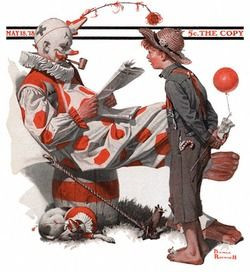Literacy Blogs
- All
- 3-cueing
- academic learning time
- academic vocabulary
- accommodations
- accountability testing
- Active View of Reading
- adolescent literacy
- afterschool programs
- alphabet
- amount of instruction
- amount of reading
- argument
- assessment
- auding
- author awareness
- automaticity
- balanced literacy
- beginning reading
- Book Buddies
- Book Flood
- challenging text
- classroom organization
- close reading
- coaching
- cohesion
- Common Core State Standards
- complex text
- comprehension strategies
- content area reading
- context analysis
- curriculum materials
- Daily 5
- decoding
- departmentalization
- DIBELS
- dictionary skills
- digital texts
- disciplinary literacy
- dyslexia
- early interventions
- effective teachers
- Emily Hanford
- executive function
- family literacy
- fingerpoint reading
- foundational skills
- graphic novels
- guided reading
- heterogeneous grouping of students
- homework
- improving reading achievement
- independent reading
- independent reading level
- informal reading inventories
- informational texts
- instructional level
- invented spelling
- jigsaw instruction
- knowledge
- leadership
- learning disabilities
- Lexiles
- linguistic comprehension
- listening comprehension
- literacy charities
- literacy policy
- literary interpretation
- main idea
- morphology
- motivation
- narrative text
- National Early Literacy Panel
- nonsense words
- oral language
- oral reading fluency
- paraphrasing
- Pause, Prompt, Praise (3P)
- personalized learning
- phonemes
- phonemic awareness
- phonics
- press and media
- principals
- prosody
- Readers' Workshop
- reading comprehension
- reading disabilities
- reading intervention
- reading levels
- reading models
- Reading Recovery
- reading research
- reading skills
- reading strategies
- reading to children
- reading wars
- reading-writing relations
- remedial reading
- rereading
- Response to Intervention
- Scarborough's Rope
- science of reading
- seatwork
- semantics
- sentence comprehension
- sequence of instruction
- set for consistency
- set for variability
- shared reading
- shared reading
- sight vocabulary
- simple view of reading
- Simple View of Reading
- small group instruction
- social studies
- sound walls
- Special Education
- speech-to-print phonics
- spelling
- stamina
- summarizing
- Sustained Silent Reading
- syllabication
- syntax
- syntax
- testing
- text complexity
- text interpretation
- text reading fluency
- text structure
- theme
- think-pair-share
- trauma
- visualization
- vocabulary
- word walls
- writing
- zone of proximal development (ZPD)
Welcome Back Teachers, It's a Long Climb
Blast from the Past: This blog entry first posted August 21, 2010; and was re-posted on August 16, 2018. Advice for the beginning of another school year. This week lots of school openings and students returning to the university. I always look at this time of the year with lots of anticipation (and some foreboding); teaching is both something to be looked forward to and to dread. The part I love is the chance to share what I know with students who want to learn it; the chance to make a difference, to help others know something that they haven’t yet figured out. What a joy! The dread? ...
Teaching Reading with Multiple Texts
The Common Core Standards repeatedly stress the idea that kids should be reading more than one text. I don't mean they call for kids to have multiple textbooks (the standards say nothing about how teaching should take place), but they do call for kids to be able to compare and contrast, analyze, evaluate, and synthesize information across texts. That is a big step forward, since multiple texts place different, and more authentic, reading demands on students. Here are many of the standards that dictate developing students abilities to read multiple texts and the grade levels that these are expected to ...
Turn Around Schools
Let me go on record as saying I'm not a big fan of the turnaround school movement that comes out of Chicago. The idea has been that you identify a school that isn't doing well, you try to fix it, and if it doesn't improve you close it down. I have always been on the side of fixing such schools rather than closing them. However, what do you do with a school that doesn't improve? There are schools in Chicago (and elsewhere) that have received a lot of resources and that have had a lot of time, and they still haven't ...
What Does It Mean that a Reading Program Works?
Recently, the What Works Clearinghouse (WWC) posted a report on multi-sensory programs for teaching children with reading disabilities. The report indicated that Orton-Gillingham, Wilson Reading, and other similar programs lacked convincing empirical evidence of their effectiveness. This has set off a lot of angry e-mailing this weekend from those who “know” these methods work. http://http://ies.ed.gov/ncee/wwc/ Although I serve as a reading content expert for WWC, I had nothing to do with this report. They only involve me in those aspects of their work when they have a substantive question about reading instruction or assessment, and on this report, I guess there were ...
On the Misuse of Research Evidence in Reading
Originally posted June 26, 2010; re-posted on August 31, 2017. This post is timely given some of what I saw on Twitter this week as well as some recent questions and responses to my posts. There is still a great hunger to use research to support one's claims rather than using research to try to figure out what instructional actions to take. Too many principals buying programs then seeking reasons why they did. I will write more about this soon. I remember the first time I was asked to testify before Congress. I was so full of myself. Wow, what a big ...
Summer of a Million Books
As I've written here before, I serve on the Board of Directors of Reach Out and Read, one of the most valuable reading promoters in the world. This summer they have launched a campaign to give a brand-new, age-appropriate book to one million children in need before Labor Day. The Summer of a Million Books campaign unites Reach Out and Read pediatricians and family physicians at 4,500 hospitals and clinics across the country in their mission to prepare America’s youngest children to succeed in school. And you can help. Reach Out and Read developed the Summer of a Million Books in ...
Should We Use Textbooks or Not?
I just read some emails on a literacy listserv that I subscribe to. They were arguing about whether to use textbooks in science. Some of my reading colleagues who are pro reading, and who are even pro reading in science, expressed animosity towards science textbooks. There were all kinds of reasons for this, some stated, some not. For one thing, they were sympathetic with science educators who want hands-on-science, and let's face it, hands on experiments can be cool (let me tell you sometime about burning up my classroom trash pail with a volcano). The most basic reason these educators oppose ...
Getting with the Disciplinary Literacy Fad
Get with the fad folks. It is in now to champion “disciplinary literacy.” I certainly support the idea of disciplinary literacy, but so many of the folks who tout this (that is, those who are in with the fad), don’t seem to have a clue what it is even about. Traditionally, “content area reading” proponents said the right things about respecting the disciplines, but for the most part their agenda was about teaching reading skills using texts from math, science, and social studies. Their idea was more about how teachers could use K-W-L (or three-level guides or SQ3R) with a science ...
How Literacy is Like Leukemia
Blast from the Past: This blog entry posted on May 17, 2010 and was re-posted on March 1, 2018. It explores the complex reasons why students have trouble learning to read—whether the main roots of those problems are due to disabilities (e.g., dyslexia) or social problems (e.g., poverty, racism). However, despite these profound causes of reading problems, there are two certainties: even with big problems kids are pretty resilient and making kids literate requires quality teaching. I love Malcolm Gladwell. He is a regular New Yorker contributor and authored The Tipping Point and Blink. Recently, he wrote about how new drugs are discovered, and as ...
12 Ways to Improve Your Literacy Teaching this Summer
Our university held its graduation ceremony Thursday night. That means that it is almost time for your summer break, and man, have you earned it! I'm sure you're dog tired--the good kind of tired I hope where you can barely see straight, but through it you are proud of how things went for the kids. And with this terrible economy many districts are laying off teachers (the worst I've seen in my whole career). All the more reason to kick back and take it easy. But you are a professional teacher. And what is summer vacation for your kids, should really be ...









